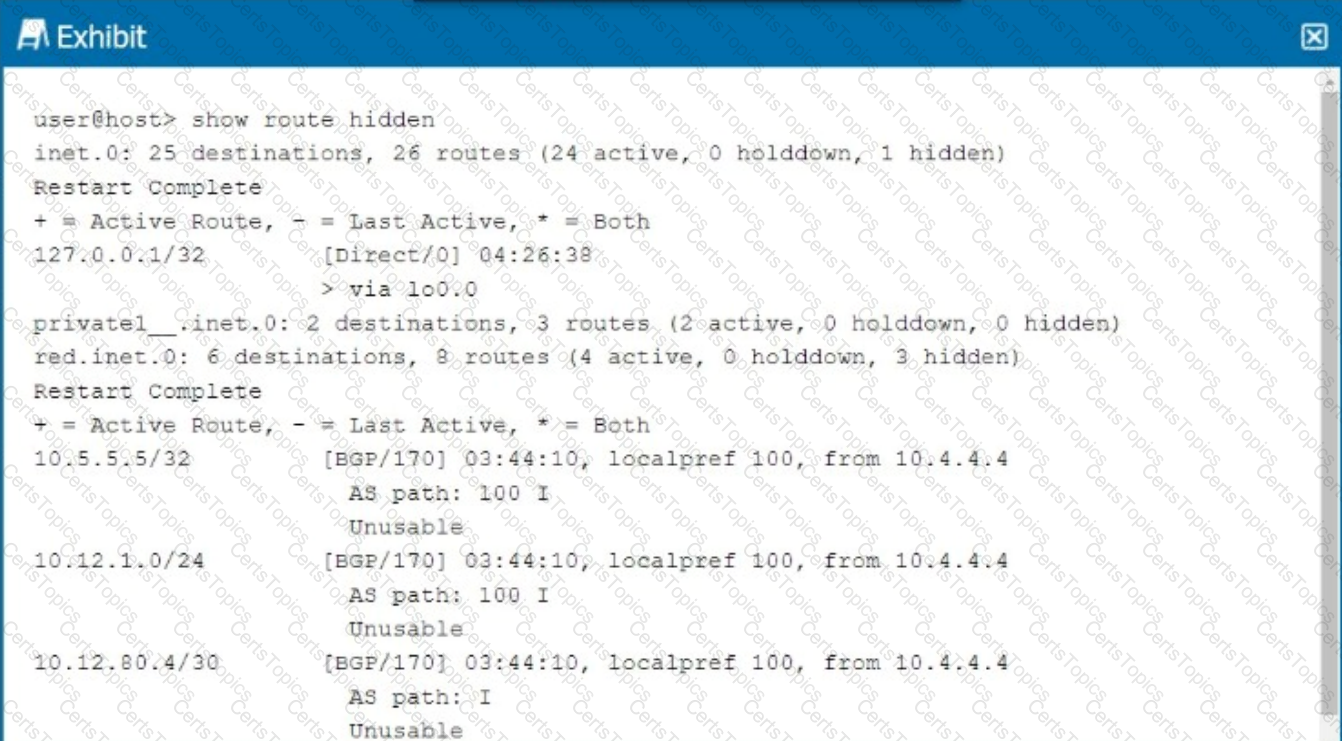Juniper Related Exams
JN0-280 Exam







A switch receives a frame with a MAC address of FF-FF-FF-FF-FF-FF. Which action will the switch take on this frame?
A generated route is configured under which hierarchy?

Referring to the exhibit, why are the BGP routes hidden?